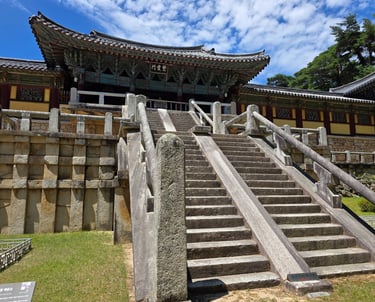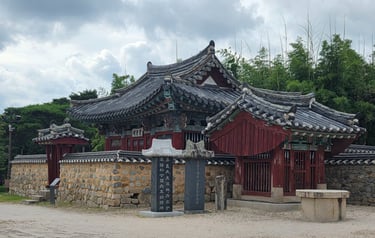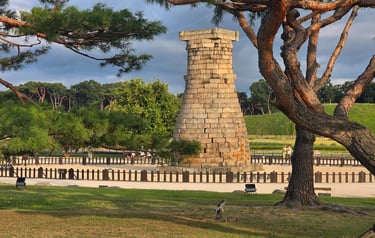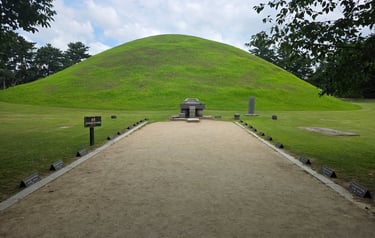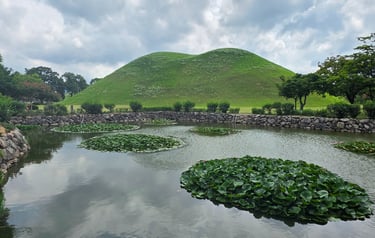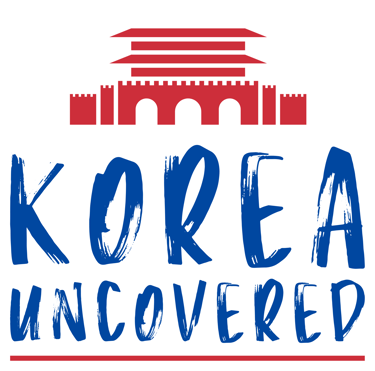
Villages and Historic Areas
Baekje Historic Areas
Baekje Historic Areas is made up of eight archaeological sites that have been protected as a single UNESCO World Heritage listing since 2015. Baekje is an ancient kingdom that is divided into three different periods - the Hanseong period (18 BCE to 475 CE), the Ungjin period (475-538 CE) and the Sabi period (538 to 660 CE). The sites comprising the Baekje Historic Areas date from 475 to 660 CE, making them part of the Ungjin and Sabi periods. The eight sites are split over three different locations - the present day cities of Buyeo, Gongju and Iksan. The sites in Buyeo are Busosanseong Fortress and Gwanbuk-ri, Jeongnimsa Temple, Naseong city wall and the Neungsan-ri royal tombs. In Gonju the sites are Gongsanseong Fortress and the Songsan-ri royal tombs and the final two sites in Iksan are Wanggung-ri Palace and Mireuksa Temple. Baekje Historic Areas was inscribed by UNESCO based on two criteria - evidence of the exchange between the ancient East Asian kingdoms in Korea, China and Japan in the development of construction techniques and the spread of Buddhism and that the sites and monuments represent the unique culture, religion and creativity of the Baekje Kingdom. Pictures of all sites to follow soon.
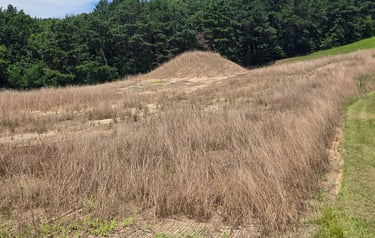

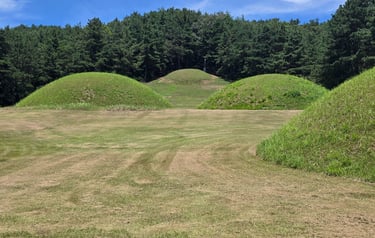


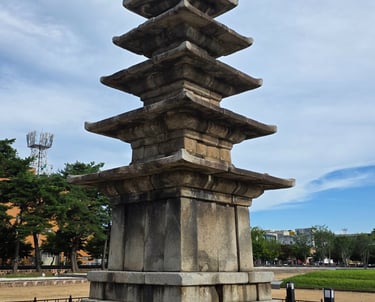
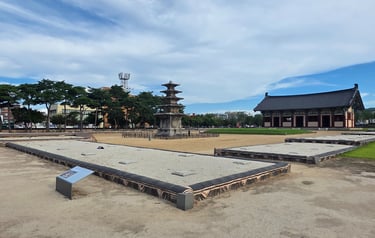

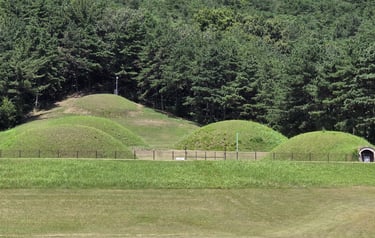

Gyeongju Historic Areas
Gyeongju Historic Areas is a diverse concentration of heritage sites that have been protected as a single UNESCO World Heritage listing since 2000. These areas are divided into what UNESCO calls 'belts' and in total there are five separate belts: the Mount Namsan Belt, the Wolseong Belt, the Tumuli Park Belt, the Hwangnyongsa Belt and the Sanseong Fortress Belt. Each of these contain a variety of sites. For instance, the Mount Namsan Belt and the Hwangnyongsa Belt include many Buddhist remains whilst the Tumuli Belt contains royal tombs and the Wolseong Belt incorporates the remains of two palaces and Cheomseongdae Observatory amongst other sites. Gyeongju Historic Areas was inscribed by UNESCO based on two criteria - the significance of sites and monuments in the development of Buddhist and secular architecture and as evidence of the cultural achievements of the Silla (Gyeongju was the capital during the Silla and Unified Silla periods). There is a huge range of sites in Gyeongju, and a very large and very good museum (Gyeongju National Museum). Although many places are very close to each other, some of them, such as Bulguksa Temple and Seokguram Grotto, are more distant, so if you want to see the full range of sites then make sure that you have at least a 2-3 days to explore.

